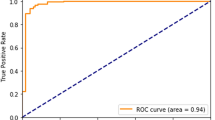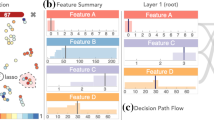Abstract
The Philadelphia Low-Intensity Community Supervision Experiment provides evidence on the effects of lowering the intensity of community supervision with low-risk offenders in an urban, US county community corrections agency. Using a random forests forecasting model for serious crime based on Berk et al. Journal of the Royal Statistical Society, Series A, 172(Part 1), 191–211, 2009, 1,559 low-risk offenders were identified and randomly assigned to either standard or reduced frequency of mandatory office visits. Treatment as assigned was substantially delivered at 4.5 probation visits per year versus 2.4, for as long as offenders remained on active probation or parole. In a one-year follow-up for all cases, outcomes examined were the prevalence, frequency, seriousness and time-to-failure of arrests for new crimes committed after random assignment was implemented. No significant differences (p = .05) in outcomes were found between standard and low-intensity groups. Non-significant differences for offense seriousness favored the low-intensity group. We conclude that lower-intensity supervision at the tested level of dosage can allow fewer officers to supervise low-risk offenders in the community without evidence of increased volume or seriousness of crime.



Similar content being viewed by others
Notes
The operating practices of the APPD do not distinguish between probationers and parolees, largely because many offenders have multiple cases simultaneously at different stages of the system. It is possible, for example, to be on probation for one offense at the same time as being on parole for another offense.
APPD already had a low-risk caseload outside the regional units before the experiment was implemented. However, assignment to the caseload was based on a different risk tool that predicted arrest for any new offense. Offenders assigned to this caseload had reduced reporting requirements, so had already experienced supervision levels similar to those being tested in the experiment.
One example of these unanticipated conditions was the court-ordered FIR (Forensic Intensive Recovery) program, a drug evaluation and treatment regime. Within weeks of the experiment’s start date, APPD administrators decided that the intensive monitoring required for offenders in drug treatment was impossible to provide within the experimental officers’ large caseloads. As a result, 108 offenders (58 experimental, 50 control) with FIR conditions became ineligible for low-intensity supervision.
Two experimental offenders appear to have had their prior criminal records expunged from the court database, and now have no previous criminal history, despite the fact that both of them were on probation and were enrolled into the RCT.
That fact makes this experiment most useful in the short run, when the APPD’s caseload is in transition for a gradual shift of existing cases from OSFA to risk-based treatment unique to that risk level. The present experiment is perhaps less valid as an assessment of differences from the initiation of probation or parole sentence, as will become the case in the long run.
As before, “active supervision” excludes any time when the offender had absconded from supervision and had been placed into one of the “Wanted Card” caseloads. The same pattern of results, however, is found when this “Wanted Card” time is included in the calculations.
References
Anderson, E. (1999). Code of the street. Boston: Norton.
Ahlman, L. C. & Kurtz, E. M. (2009). The APPD Randomized Controlled Trial in Low Risk Supervision: The Effects of Low Risk Supervision on Rearrest. Philadelphia: Adult Probation and Parole Department.
Berk, R. A., Sherman, L. W., Barnes, G. C., Ahlman, L., & Kurtz, E. (2009). Forecasting murder within a population of probationers and parolees: a high stakes application of statistical learning. Journal of the Royal Statistical Society, Series A, 172(Part 1), 191–211.
Braga, A., & Weisburd, D. (2010). Policing problem places. NY: Oxford University Press.
Coalition for Evidence-Based Policy (2010). Home Page. Downloaded February 19 from http://coalition4evidence.org/wordpress/.
Cohen, J. (1988). Statistical power analysis for the behavioral sciences (2nd ed.). Hillsdale: Lawrence Earlbaum Associates.
Dodge, K. A., & Dishion, T. J. (2006). Deviant peer contagion in interventions and programs: an ecological framework for understanding influence mechanisms. In K. A. Dodge, T. J. Dishion, & J. E. Landsford (Eds.), Deviant peer influences in programs for youth (pp. 14–43). New York: Guilford Press.
Dodge, K. A., Dishion, T. J., & Lansford, J. E. (2006). Deviant peer influences in programs for youth. New York: Guilford Press.
Gill, C. E. (In press). “Intensity of probation supervision: A systematic review.” Jerry Lee Center for Criminology, University of Pennsylvania.
Goffman, A. (2009). On the run: Wanted men in a Philadelphia Ghetto. American Sociological Review, 74, 339–357.
Erwin, B. S. (1986). Turning up the heat on probationers in Georgia. Federal Probation, 50, 17–24.
Farrington, D., Coid, J. W., Harnett, L., Jolliffe, D., Soteriou, N., Turner, R., et al. (2006). Criminal careers and life success: new findings from the Cambridge Study in Delinquent Development. London: Home Office Findings #281.
Federal Judicial Center. (1981). Experimentation in the Law. Washington: Federal Judicial Center, Administrative Office of the U.S. Courts.
Gibbs, J. D. (1975). Crime, punishment and deterrence. NY: Elsevier.
Hanley, D. (2006). Appropriate services: examining the case classification principle. Journal of Offender Rehabilitation, 42, 1–22.
Jacobson, M. (2005). Downsizing prisons. NY: NYU Press.
Lipsey, M. (2006). The effects of community based group treatment for delinquency: A meta-analytic search for cross-study generalizations. In K. A. Dodge, T. J. Dishion, & J. E. Landsford (Eds.), Deviant peer influences in programs for youth (pp. 162–184). New York: Guilford Press.
MacKenzie, D. (2006). What works in corrections: Reducing the criminal activities of offenders and delinquents. New York: Cambridge University Press.
O’Connell, M. E., Boat, T., Warner, K. E. (Eds.) (2009). Preventing mental, emotional, and behavioral disorders among young people: Progress and possibilities. Washington, D.C.: Committee on the Prevention of Mental Disorders and Substance Abuse Among Children, Youth and Young Adults: Research Advances and Promising Interventions. Institute of Medicine; National Research Council, National Academies Press.
Petersilia, J., & Turner, S. (1993). Intensive probation and parole. In M. Tonry (Ed.), Crime and Justice: A Review of Research, 17, 281–335.
Pew Center on the States. (2009). One in 31: The long reach of American corrections. Washington: The Pew Charitable Trusts.
Rosch, J. (2006). Deviant peer contagion: Findings from the Duke executive sessions on deviant peer contagion. The Link 5, 1–17. Child Welfare League. Downloaded on May 4, 2009 from http://www.cwla.org/programs/juvenilejustice/thelink2006fall.pdf.
Sherman, L. W. (1993). Defiance, deterrence and irrelevance: A theory of the criminal sanction. Journal of Research in Crime and Delinquency, 30, 445–473.
Sherman, L. W. (2007). Use probation to prevent murder. Criminology and Public Policy, 6, 843–849.
Sherman, L. W., Gottfredson, D., MacKenzie, D., Eck, J., Reuter, P., & Bushway, S. (1997). Preventing crime: What works, what doesn’t, what’s promising. Washington: U.S. Department of Justice.
Weisburd, D., Lum, C., & Yang, S. M. (2003). “When can we conclude that treatments or programs “Don’t Work”? Annals of the American Academy of Political and Social Science, 587, 31–48.
Wilson, J. A., Naro, W., & Austin, J. F. (2007). Innovations in probation: Assessing New York City’s automated reporting system. Washington: JFA Associates.
Worrall, J. L., Schram, P., Hays, E., & Newman, M. (2004). An analysis of the relationship between probation caseloads and property crime rates in California counties. Journal of Criminal Justice, 32, 231–241.
Zimring, F. E., & Hawkins, G. (1973). Deterrence: The legal threat in crime control. Chicago: University of Chicago Press.
Acknowledgment
The Regulatory Institutions Network at the Australian National University is hereby acknowledged for its support of the writing and revision of this article.
Author information
Authors and Affiliations
Corresponding author
Appendix
Appendix
Rights and permissions
About this article
Cite this article
Barnes, G.C., Ahlman, L., Gill, C. et al. Low-intensity community supervision for low-risk offenders: a randomized, controlled trial. J Exp Criminol 6, 159–189 (2010). https://doi.org/10.1007/s11292-010-9094-4
Published:
Issue Date:
DOI: https://doi.org/10.1007/s11292-010-9094-4




